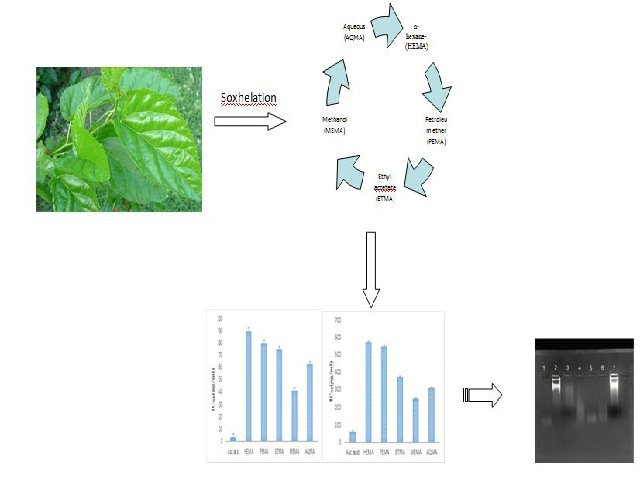Comparative Assessment of the Anti-oxidant and Anti-clastogenic Activity of Morus alba Leaves
DOI:
https://doi.org/10.5530/fra.2017.1.18Keywords:
Morus alba, MEMA, Hydroxyl, Phenols, Fenton reactionAbstract
Objective: The present study was conducted to investigate the antioxidant and anti-clastogenic activity of fractions extracted from Morusalba (Moraceae) leaves. Methods: The leaves of Morus alba were sequentially extracted using n-Hexane, Petroleum Ether, Ethyl Acetate, Methanol and Water, and Total phenolic content was determined using Folin-Ciocalteau (FC) reagent. The anti-oxidant property of each fraction was determined using 2-Deoxy-D-ribose, 2, 2-Diphenyl-1-picryl-hydrazyl (DPPH) and Hydroxyl radical scavenging assay. Furthermore, anti-clastogenic potential of these fractions was determined using calf-thymus DNA in the presence of Fenton’s reagent followed by analyzing the samples by agarose gel electrophoresis. Results: All fractions showed the presence of varied amounts of total phenols and exhibited anti-oxidant activity as determined by scavenging the corresponding radicals. Among these fractions the methanol fraction (MEMA) showed the maximum phenol content as well as anti-oxidant activity. In addition MEMA could inhibit the breakage of DNA strands (anti-clastogenic activity) compared to other fractions tested. Discussion: Results of this study suggests that MEMA is likely to possess better antioxidant and anti-clastogenic activity.
Downloads
Metrics





